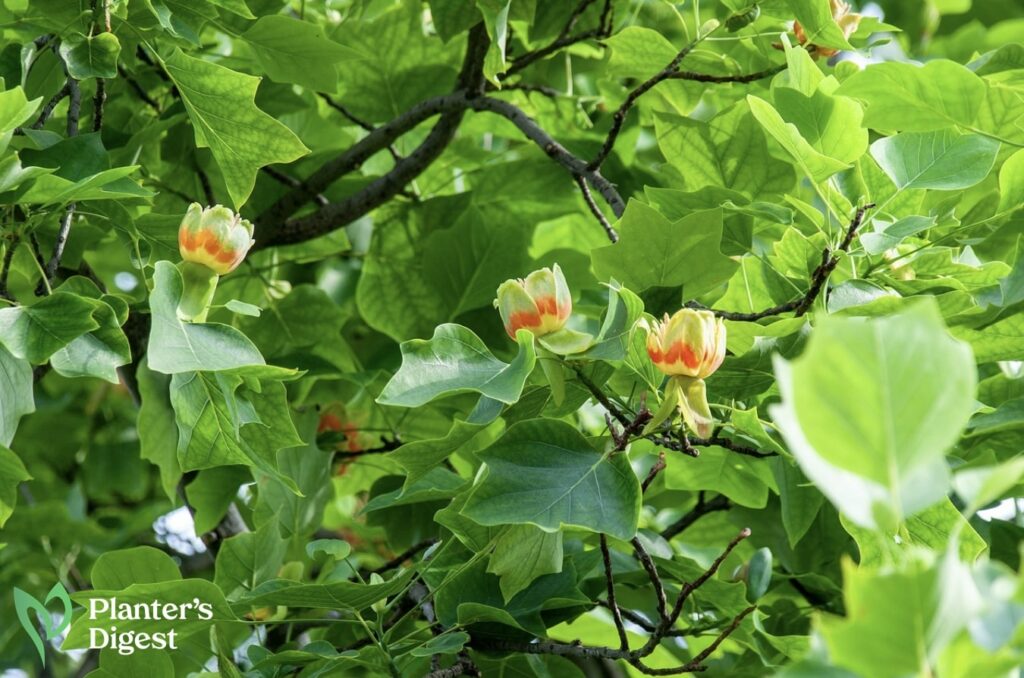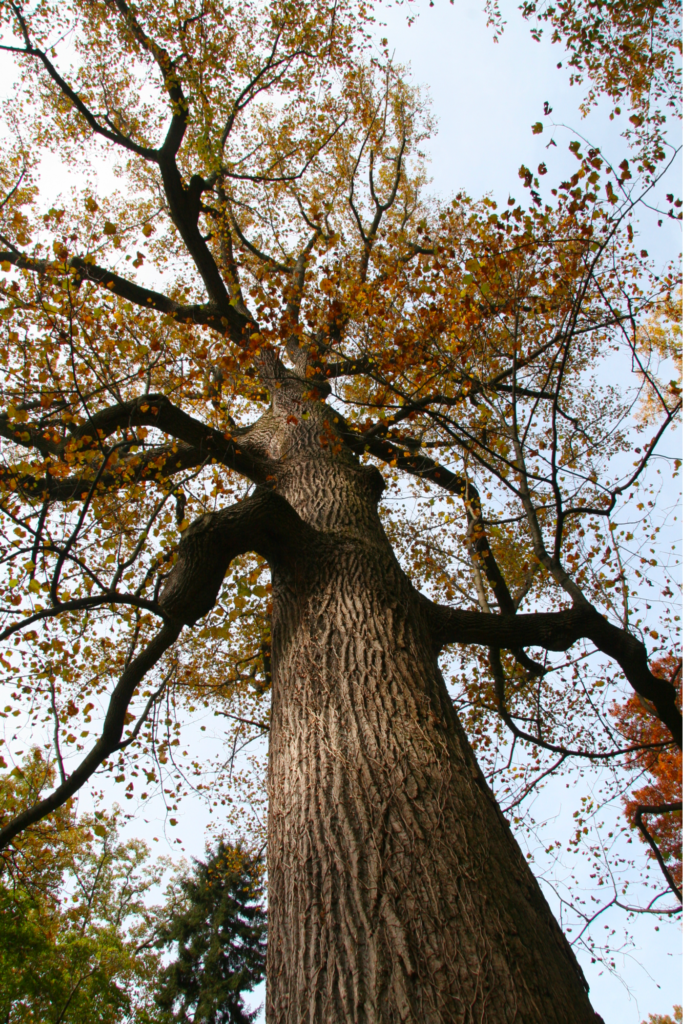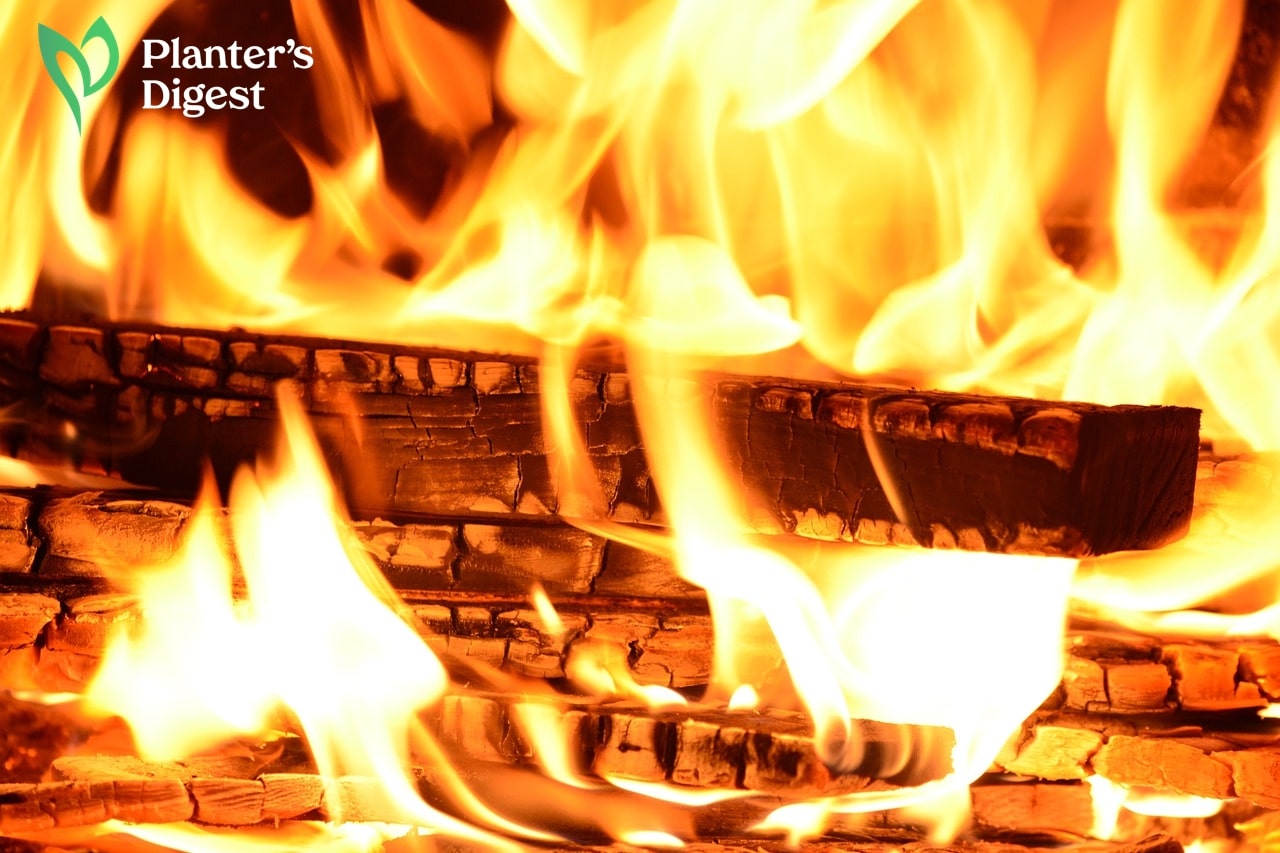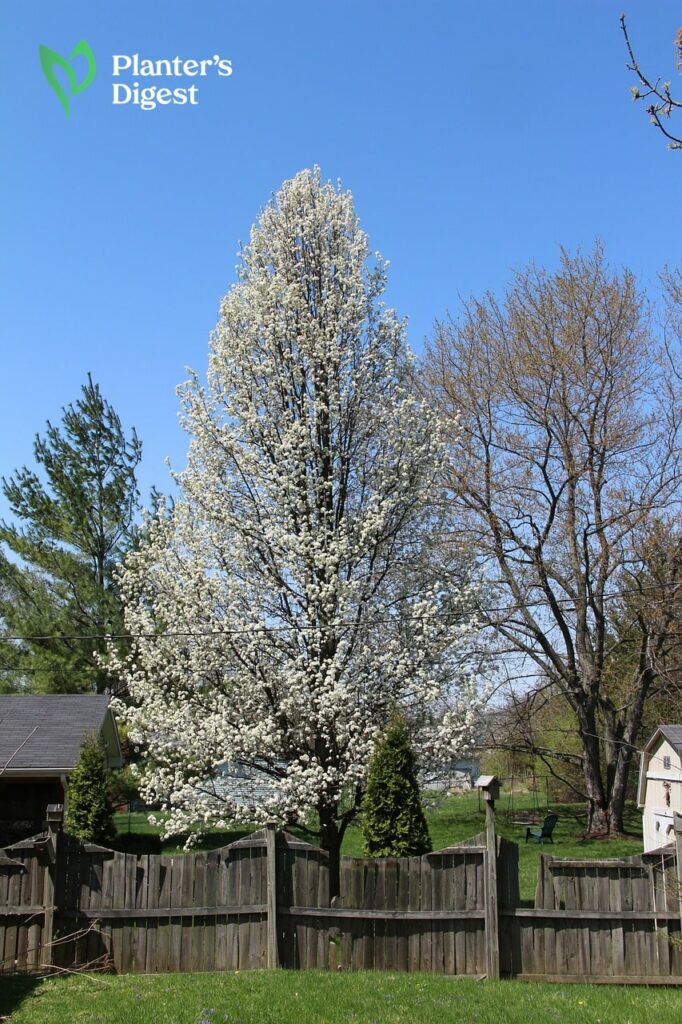
It burns fast but lights up like a charm. These characteristics (and more) make tulip poplar a go-to firewood for budget-friendly homeowners, especially in North America.
In this article, we’ll look at how tulip poplar fares as firewood and how to burn it more safely and efficiently in your home.
Is tulip poplar a good firewood?
Tulip poplar is a good firewood for outdoor campfires. It produces a medium heat output of 17.1 million BTUs per cord, emitting a sweet aroma with moderate smoke and sparks.
Tulip poplar is an excellent go-to for kindling firewood, but not for overnight burning since it produces a low amount of coals.
On average, tulip poplar burns for one to two hours only. So, it’s better to mix it with other firewood to extend burn time.
You’ll also need to double the effort when burning tulip poplar firewood because it creates a lot of white ash instead of coal, so you’ll have to take them out regularly.
Below is an overview of tulip poplar’s characteristics as firewood.
| Tree Name | Tulip Poplar |
| Scientific Name | Liriodendron tulipifera |
| Common Names | • Tulip tree • American tulip tree, • Tulipwood • Tuliptree • Whitewood • Fiddletree, • Lynn-tree • Hickory poplar, • Yellow poplar |
| Family | Magnoliaceae |
| Height | 80 to 120 feet |
| Life Span | 200 to 300 years |
| Type of Wood | Hardwood |
| Dry Weight (lbs per cord) | 2,475 |
| Green Weight (lbs per cord) | 3,230 |
| Density | 422 kg/m³ |
| Seasoning Time | 12 to 18 months |
| Heat Content (million BTUs per cord) | 17.1 |
| Sap Content | High |
| Splitting Difficulty | Easy |
| Smoke | Moderate |
| Smell | Sweet |
| Coal Production | Low |
| Creosote Build-up | Moderate |
Fire Characteristics of Tulip Poplar Wood
Tulip poplar is a sweet-smelling, easy-to-split firewood with high sap content and moisture level, moderate heat, smoke and creosote output, and low coal production.
Let’s look at each fire characteristic of tulip poplar wood.
1. Easy to Split
Tulip poplar is an easy-to-split wood that you can break by just using a hand maul, axe or hatchet. This means you can easily stock up on firewood for campfires.
2. High Sap Content
Tulip poplar trees produce a lot of sap during spring. Popularly known as “honeydew,” this attracts thousands of bees and other pollinators.
Even when cut and left to dry, tulip poplar wood still has high sap levels, so it’s best to complete the 12- to 18-month seasoning period.
3. Sweet Smell
Tulip poplar emits a sweet aroma when burned. Some even describe it as having a slightly spicy undertone.
This wood is susceptible to moisture and tends to rot quickly. Always keep it dry because it will release an unpleasant smell once it decomposes.
4. High Moisture Level
When chopping off tulip poplar wood, expect it to be quite wet. This wood is prone to waterlogging, which even builds pressure on the growing tree.
But once you split the tulip poplar and release the pressure, the wood will dry out quickly.
5. Moderate Heat Output
Tulip poplar firewood gives off a decent heat output of 17.1 million BTUs per cord. Since this type of wood burns quickly, we recommend mixing tulip poplar with other firewood like locust, oak, maple or hackberry to burn it more efficiently.
6. Moderate Creosote Build-Up
When burned, tulip poplar produces a moderate amount of creosote because of its high moisture and sap content.
Although it burns quickly, you should still expect it to leave creosote, so keep track of the black sticky deposit it adds to your flues and chimney and clean them at least once a year.
7. Moderate Smoke Output
Tulip poplar firewood produces a moderate smoke output as it burns. To lessen the smoke, use seasoned and not green wood.
8. Low Coal Production
Coals help sustain hot fire and keep it burning for an extended period. Unfortunately, tulip poplar does not create high-quality coals. Instead, it produces white ash, which doesn’t help keep the fire burning.
To extend its burn time, you can try to mix tulip poplar with firewood that produces better coals, like the black locust.
Strengths and Weaknesses of Tulip Poplar as Firewood

| Strengths | Weaknesses |
| Easy to split | High creosote output |
| Easy to ignite | Rots quickly |
| Sweet aroma | Low coal and high ash production |
Tulip poplar firewood is an excellent kindling wood that produces a sweet smell and a decent 17.1 BTU million per cord, enough to keep you warm and cozy on a cold evening.
Although it’s a hardwood, tulip poplar is easy to split using an axe or maul. It’s a good choice for those who do not have a lot of experience in splitting wood.
However, tulip poplar firewood produces creosote that can build up in your chimneys and flues and become a fire hazard when left unchecked. It also makes low coals but a high amount of ash which does not help extend its burn time.
When seasoning, tulip poplar wood is highly vulnerable to moisture and fungi, making it rot quickly.
How does tulip poplar compare with other firewood?
Tulip poplar has a higher BTU (17.1) than its namesake poplar firewood which has only 13.7 million BTUs per cord. Most homeowners prefer tulip poplar as a kindling firewood and heating source during the midwinter season.
You’ll also get more heat from burning tulip poplar than fir, catalpa, or red cedar firewood.
Unfortunately, tulip poplar’s sap content is considerably higher than most firewoods like sycamore, ash and oak.
How long should you season tulip poplar wood?
It will take tulip poplar 12 to 18 months to dry out completely because of its high moisture and sap content.
After seasoning, use your tulip poplar firewood within two years to prevent the burning of rotten wood.
During this long waiting time, regularly check on your tulip poplar for any moisture or fungi infestation. It doesn’t have natural water resistance, so water and fungi can easily cause wood to rot.
FAQs on Tulip Poplar Firewood
A green cord of tulip poplar wood weighs 3,230 lbs, while a dry cord weighs 2,475 lbs.
Tulip poplars make excellent lumber for building houses, making furniture, paper and even baskets.
Tulip poplar is a hardwood tree native to eastern North America. Contrary to popular notion, it is not a true poplar tree but is actually a member of the magnolia tree family.
Tulip poplar wood is very strong, mainly used for laminated beams and structures for most houses.
You can store and burn tulip poplar firewood for two years because it will become rotten wood afterward.




